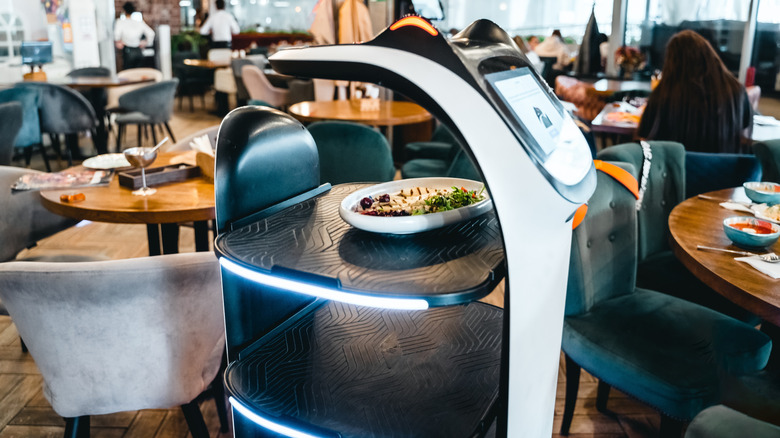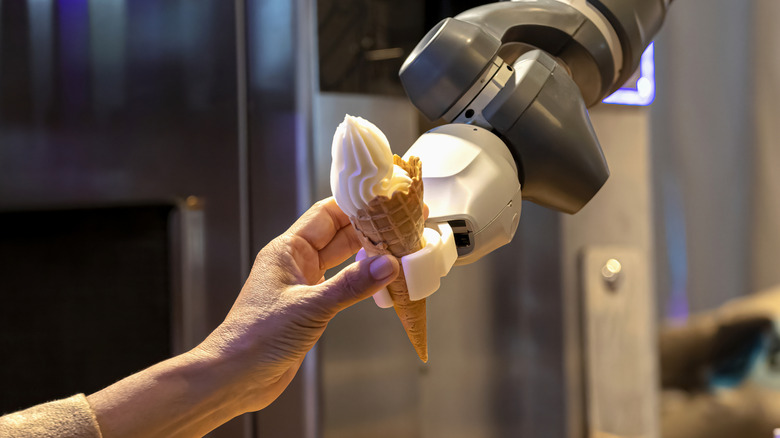Your Favorite Restaurant's Kitchen Could Actually Be Staffed By Robots
You might love a Rosie the Robot in the house to cook and clean as she did in the Jetsons' home, doing all the thankless tasks. But for restaurants, this is already a reality; Robots exist for monotonous and mundane tasks such as chopping, slicing, flipping, sautéing, frying, cleaning, and prepping. It might take a human employee an entire shift to prep enough potatoes for the rest of the evening, but a task like this is perfect for automation.
Robots are not exactly mainstream in the restaurant industry yet, but some of your favorite restaurants may have already tested them out. A robot name aptly named Flippy was installed at White Castle to flip burgers, and another version called Flippy Lite was used to automate the process of making tortilla chips at Chipotle. There are of course the cute robot servers, which wheel around the dining room leading customers to their tables and delivering trays of food. If you can't get enough of the automated life, the CaliExpress by Flippy pop-up restaurant in Pasadena, California, was fully operated by robots.
Beverages are also a focus for automation. A company called Artly produces barista robots that craft your latte from start to finish, while Blendid's small robot booths whip up customized smoothies. If you like consistency when it comes to your favorite cocktail, robots can help here, too; Makr Shakr has created a robot bartender that is installed on some Royal Caribbean cruises.
The pros and cons of robots in restaurants
If things like lab-grown meat, persuasive AI drive-thru voices, or restaurant robots sound intimidating, there are a lot of pros to these advancements in technology. For restaurants, robots can lower labor costs. In the 2020s, restaurants have struggled to hire staff and also keep up with rising costs — but, once installed, robots of course don't need to be paid. Robots automate some of the most repetitive tasks in a restaurant that don't necessarily need a human touch. Often, these are also some of the lowest-paid, entry-level positions in the restaurant industry.
As a customer, you could see increased speed in your food preparation and service. The idea is that recipes followed by robots will turn out the same every time — so your favorite dish will taste just like the last time you ordered it. Robots can also help with food safety too, as many are able to monitor temperature to ensure that food is not at risk of spoiling. Due to their precision, they can also help reduce unnecessary food waste in the kitchen.
On the flip side, installing robots in these positions could take away jobs from the people who previously performed them. Ideally, it's possible that this could lead to an opportunity to learn high-earning skills, such as managing a kitchen. Of course, as AI technology evolves, robots haven't always been perfect either, so there's a lot to consider before they become the standard in restaurants.

